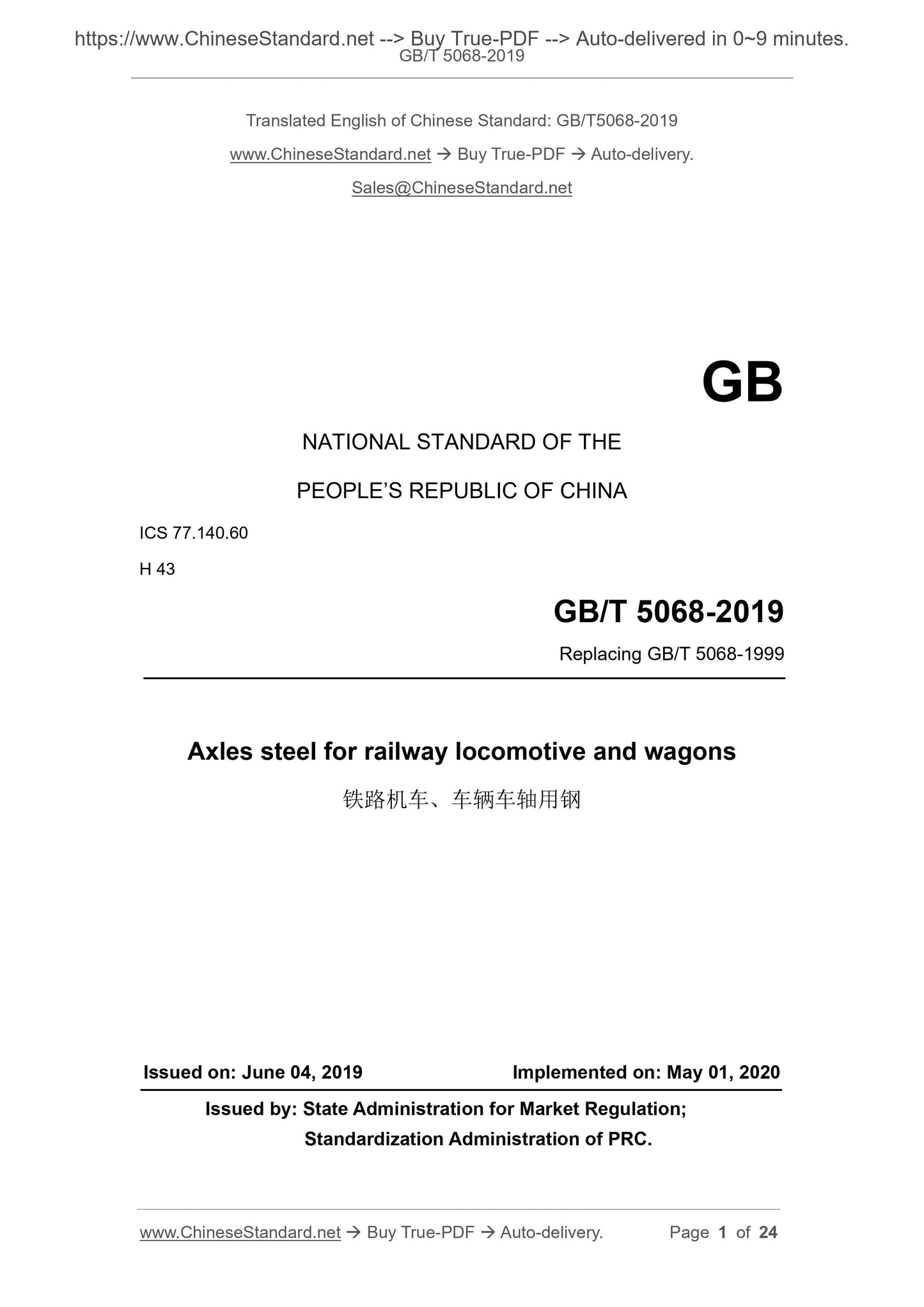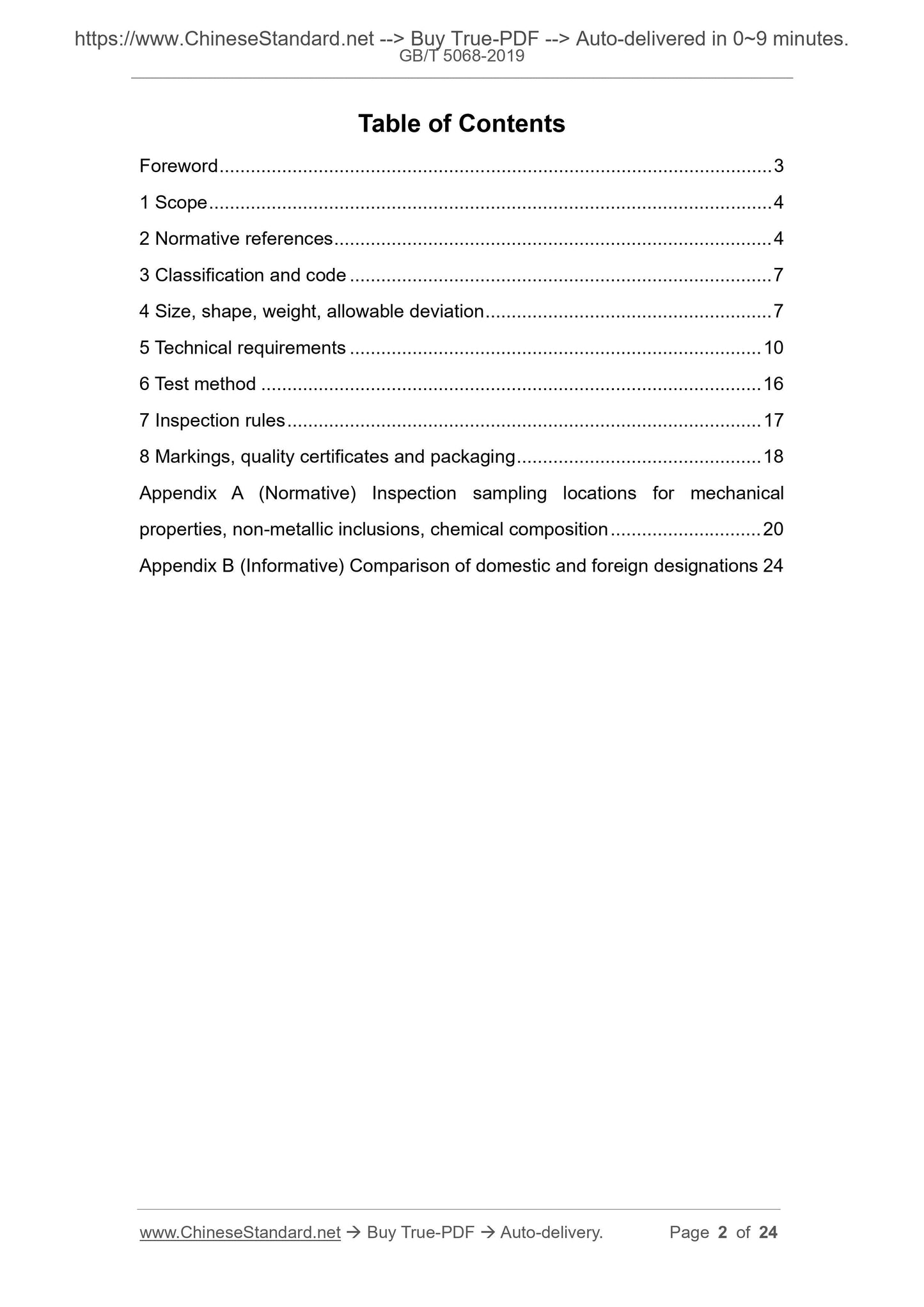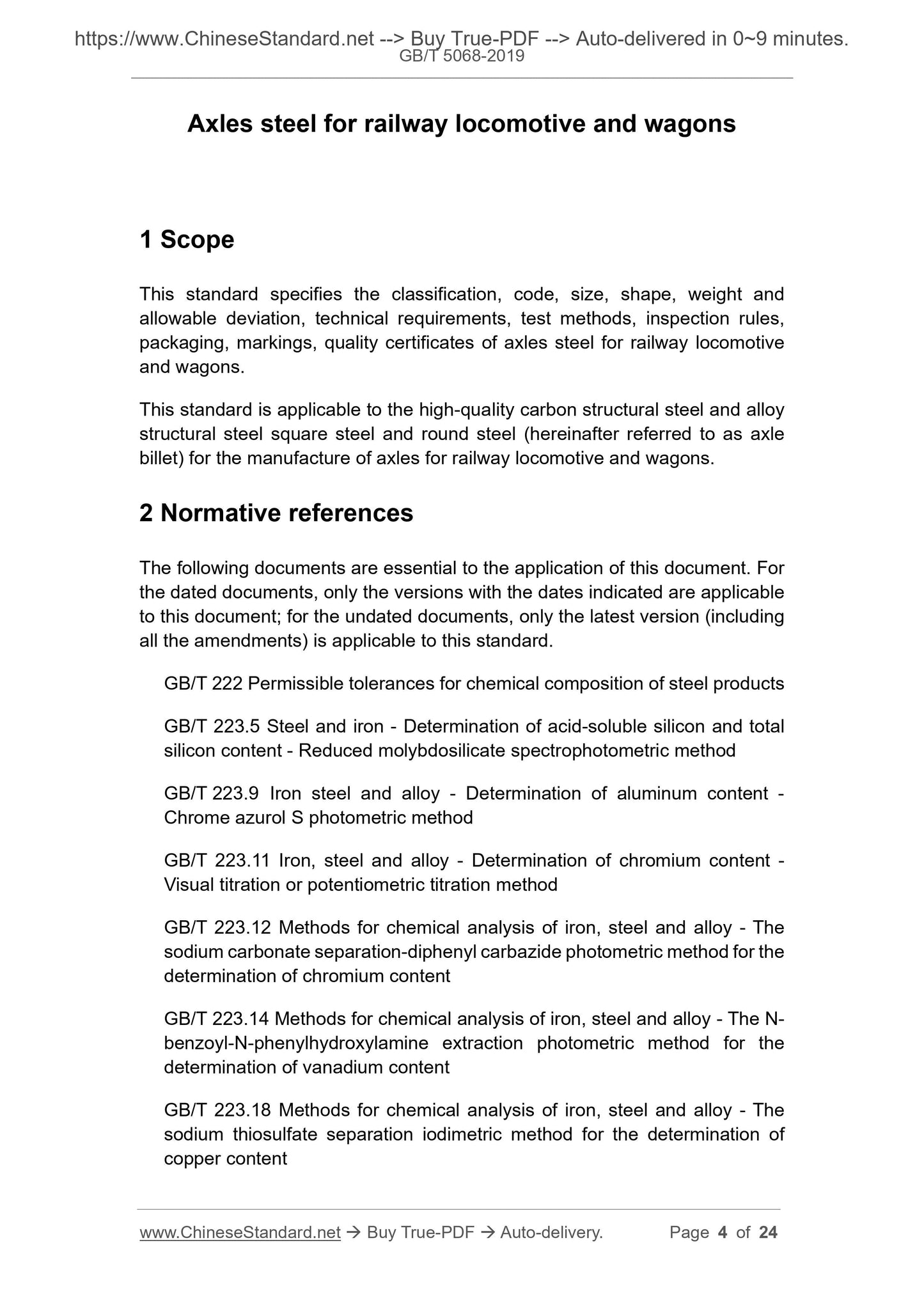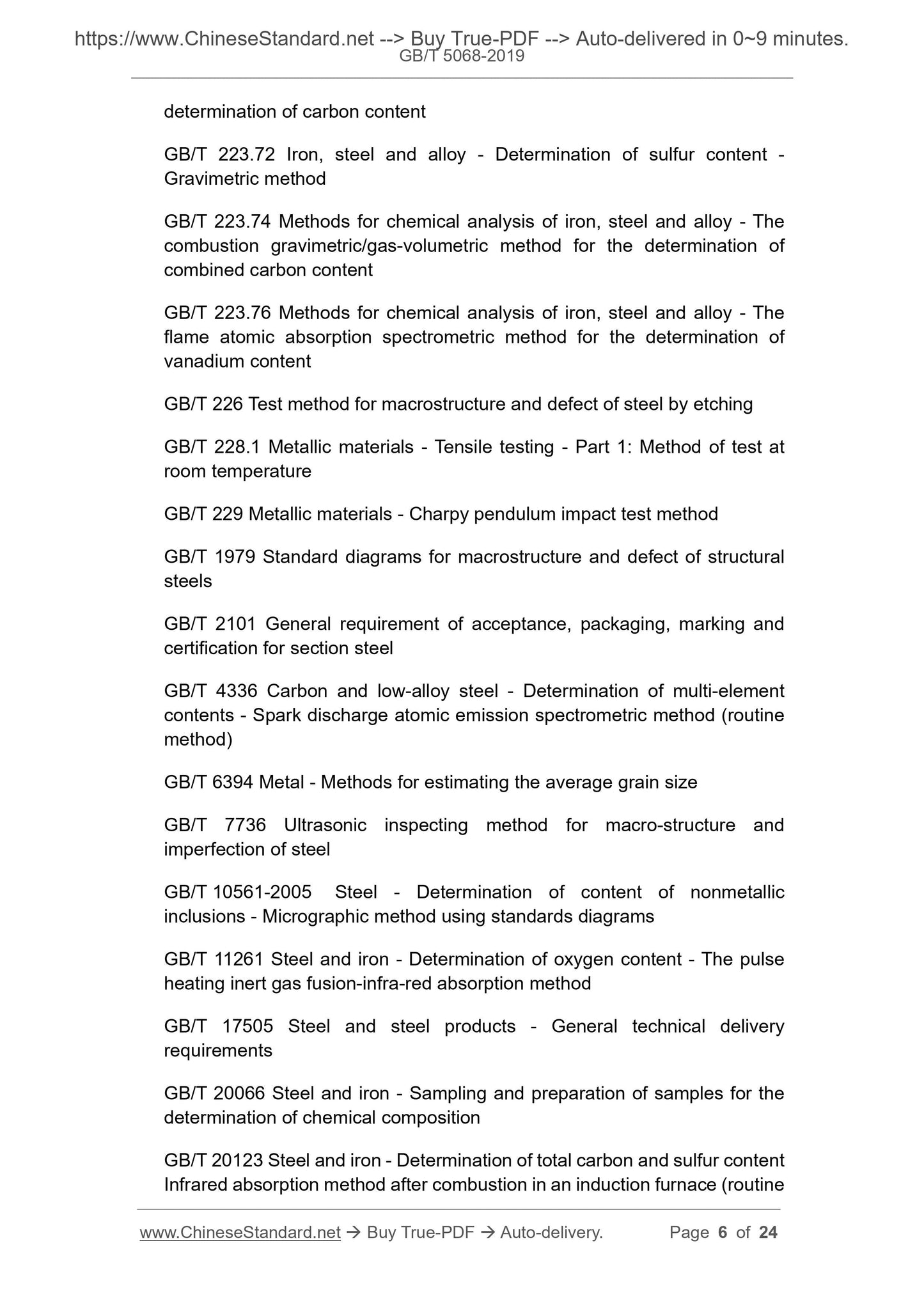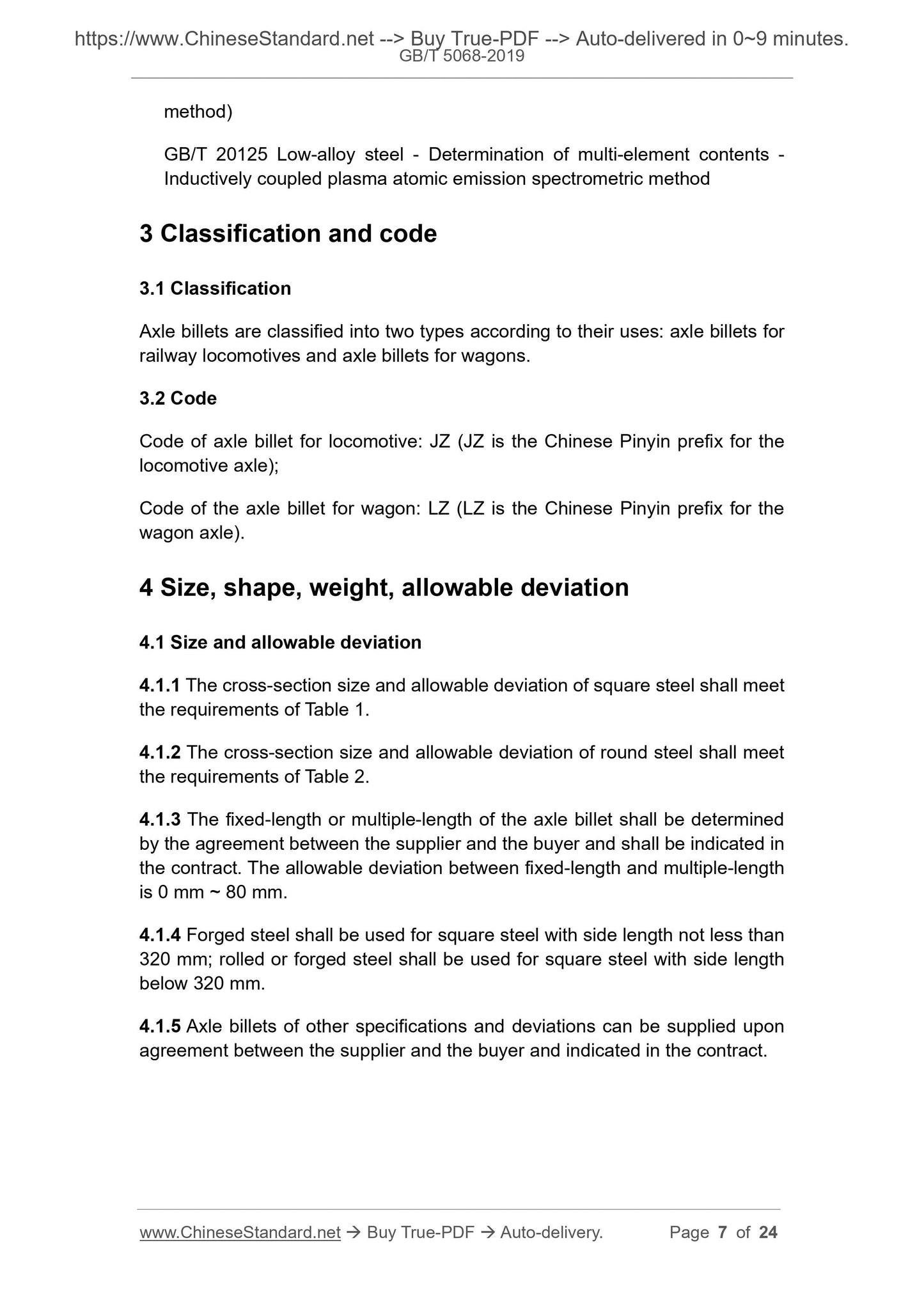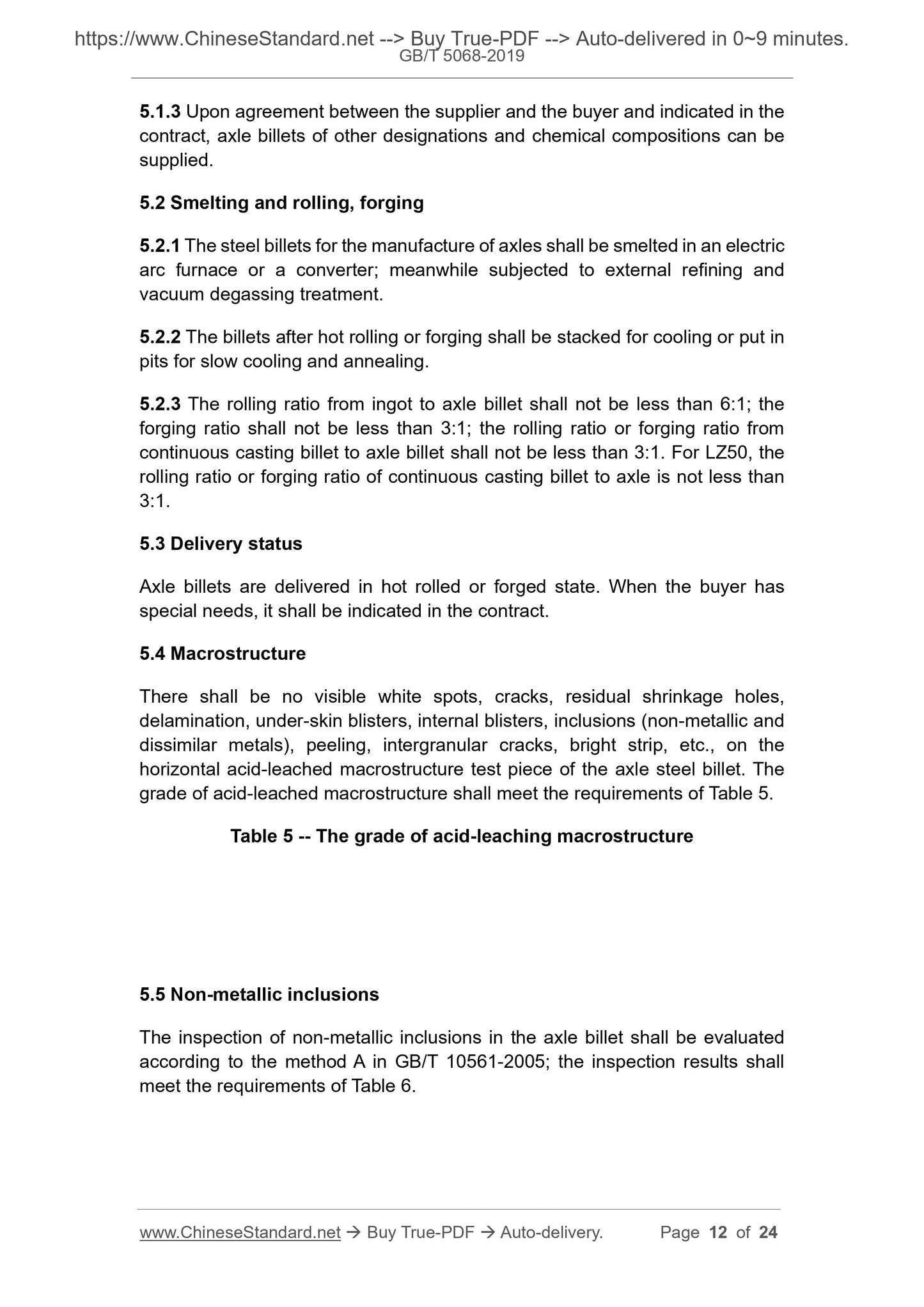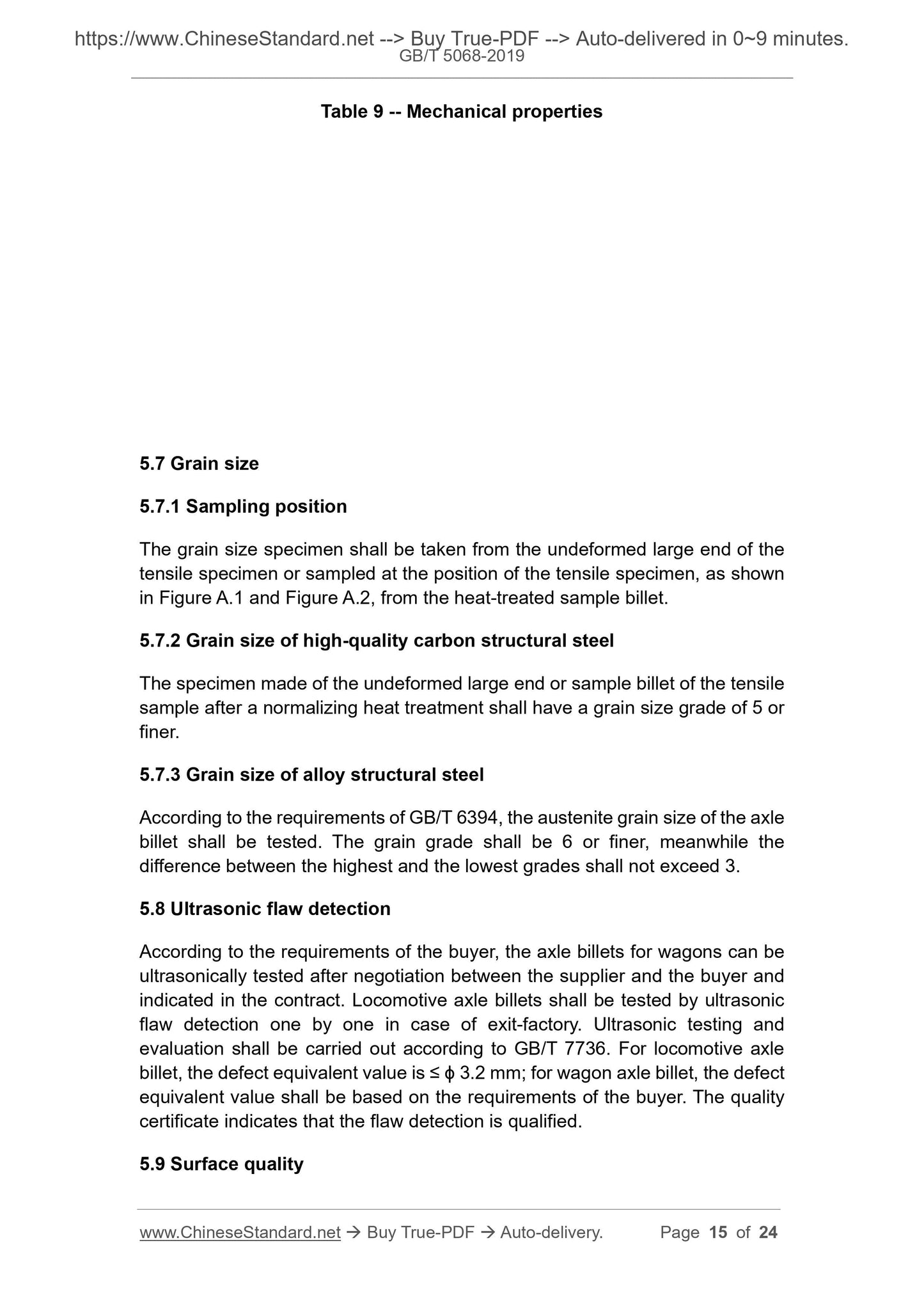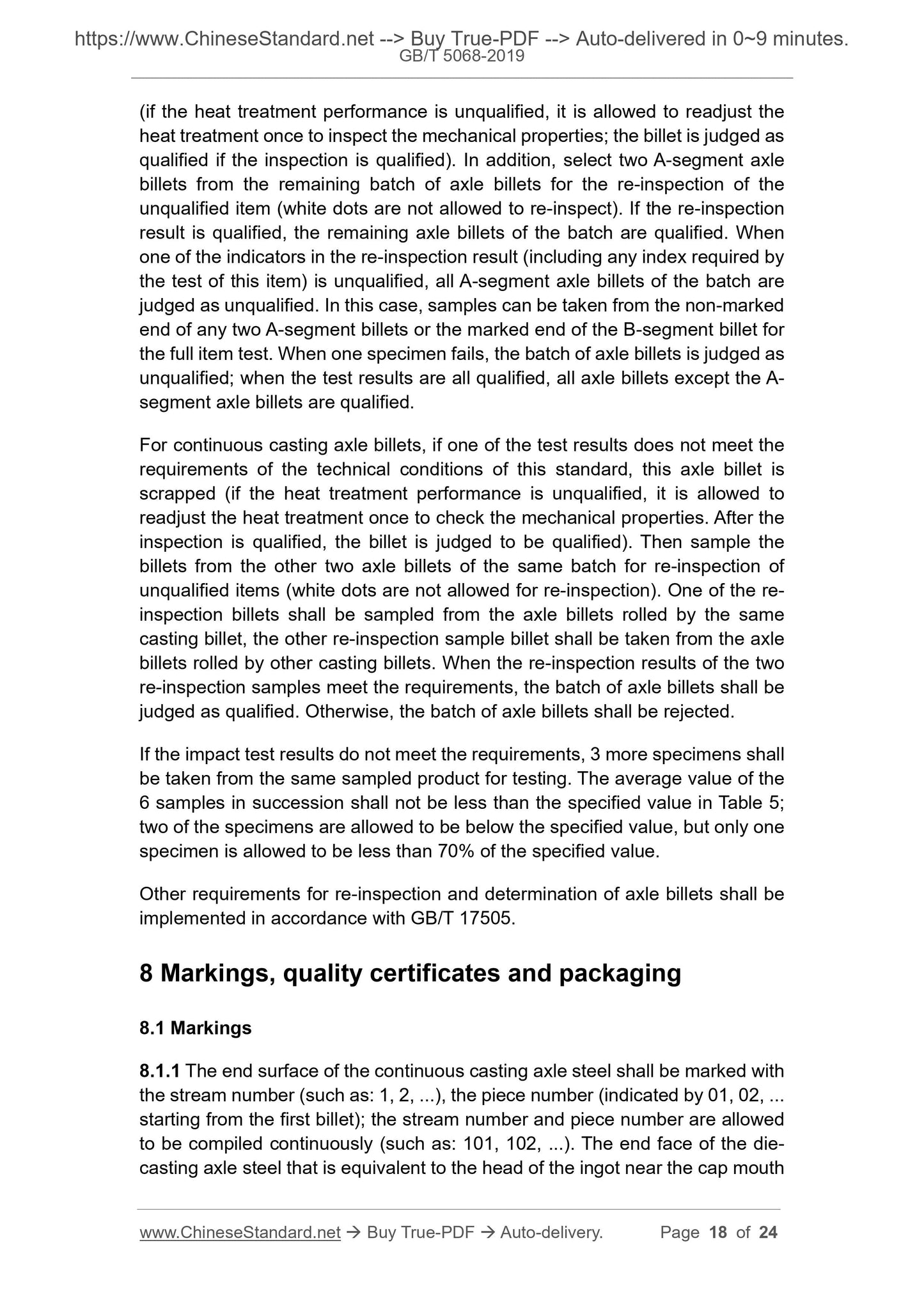1
/
of
8
www.ChineseStandard.us -- Field Test Asia Pte. Ltd.
GB/T 5068-2019 English PDF (GB/T5068-2019)
GB/T 5068-2019 English PDF (GB/T5068-2019)
Regular price
$250.00
Regular price
Sale price
$250.00
Unit price
/
per
Shipping calculated at checkout.
Couldn't load pickup availability
GB/T 5068-2019: Axles steel for railway locomotive and wagons
Delivery: 9 seconds. Download (and Email) true-PDF + Invoice.Get Quotation: Click GB/T 5068-2019 (Self-service in 1-minute)
Newer / historical versions: GB/T 5068-2019
Preview True-PDF
Scope
This standard specifies the classification, code, size, shape, weight andallowable deviation, technical requirements, test methods, inspection rules,
packaging, markings, quality certificates of axles steel for railway locomotive
and wagons.
This standard is applicable to the high-quality carbon structural steel and alloy
structural steel square steel and round steel (hereinafter referred to as axle
billet) for the manufacture of axles for railway locomotive and wagons.
Basic Data
| Standard ID | GB/T 5068-2019 (GB/T5068-2019) |
| Description (Translated English) | Axles steel for railway locomotive and wagons |
| Sector / Industry | National Standard (Recommended) |
| Classification of Chinese Standard | H43 |
| Classification of International Standard | 77.140.60 |
| Word Count Estimation | 18,140 |
| Date of Issue | 2019-06-04 |
| Date of Implementation | 2020-05-01 |
| Issuing agency(ies) | State Administration for Market Regulation, China National Standardization Administration |
Share
